Joan the Woman
6.2 /10 1 Votes6.2
Duration | 6/10 IMDb Genre Adventure, Drama, History Country United States | |||||||||||||||||||||||||||||||||
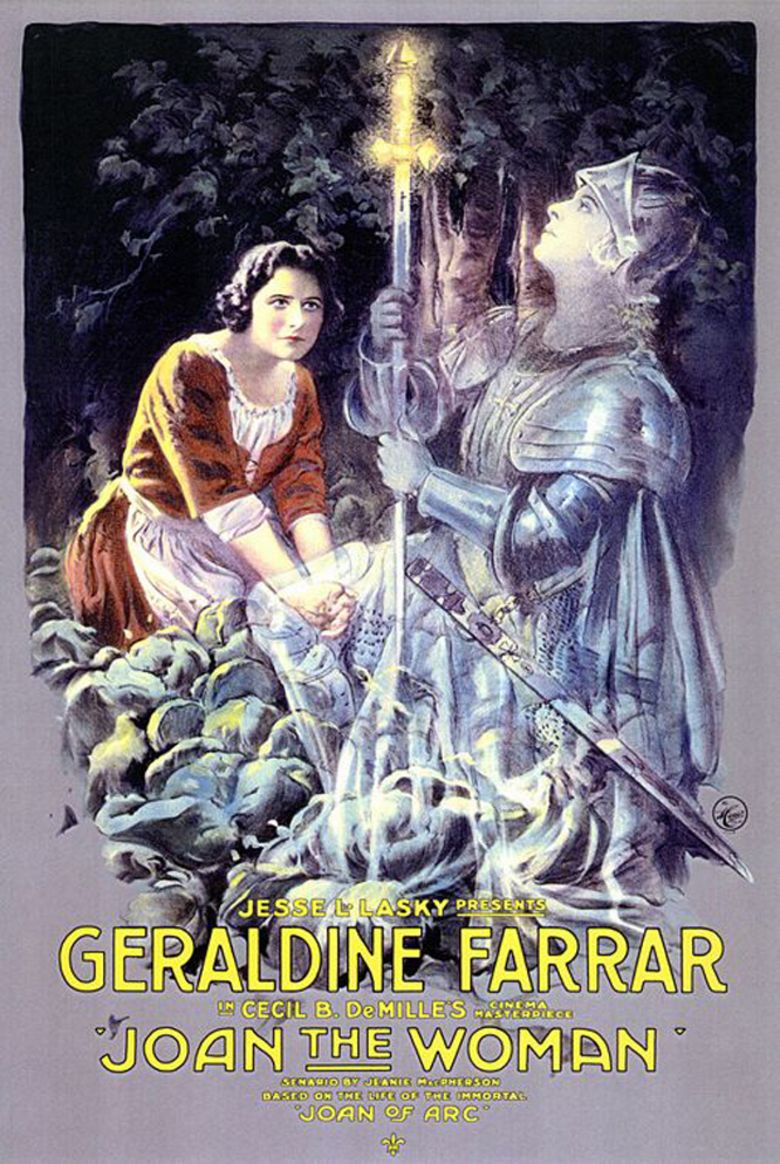 | ||||||||||||||||||||||||||||||||||
Writer Jeanie Macpherson (scenario), William C. de Mille Producers Cecil B. DeMille, Jesse L. Lasky Cast Similar movies Related Cecil B DeMille movies | ||||||||||||||||||||||||||||||||||
Joan the Woman is a 1916 American epic silent drama film directed by Cecil B. DeMille and starring Geraldine Farrar as Joan of Arc. The film premiered on Christmas Day in 1916. This was DeMille's first historical drama. The screenplay is based on Friedrich Schiller's 1801 play Die Jungfrau von Orelans (The Maid of Orleans). This film was considered to be the "first cinematic spectacle about Joan of Arc."
Contents
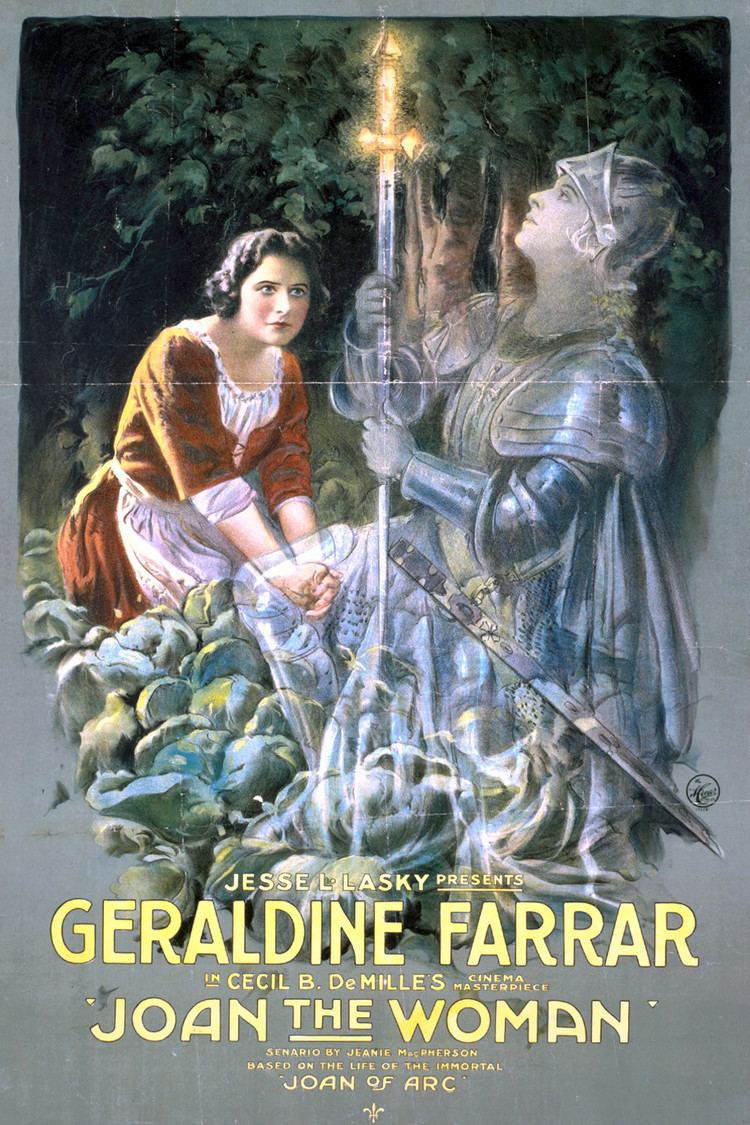
This was the first film to use the Handschiegl Color Process (billed as the "Wyckoff-DeMille Process") for certain scenes. This process is especially noticeable in the scene of Joan burning at the stake, the use of red and yellow gave this a heightened dramatic effect. A print of the film still exists. DeMille has said that in the weeks before shooting he became obsessed with historical research, costume and set design, and casting decisions.
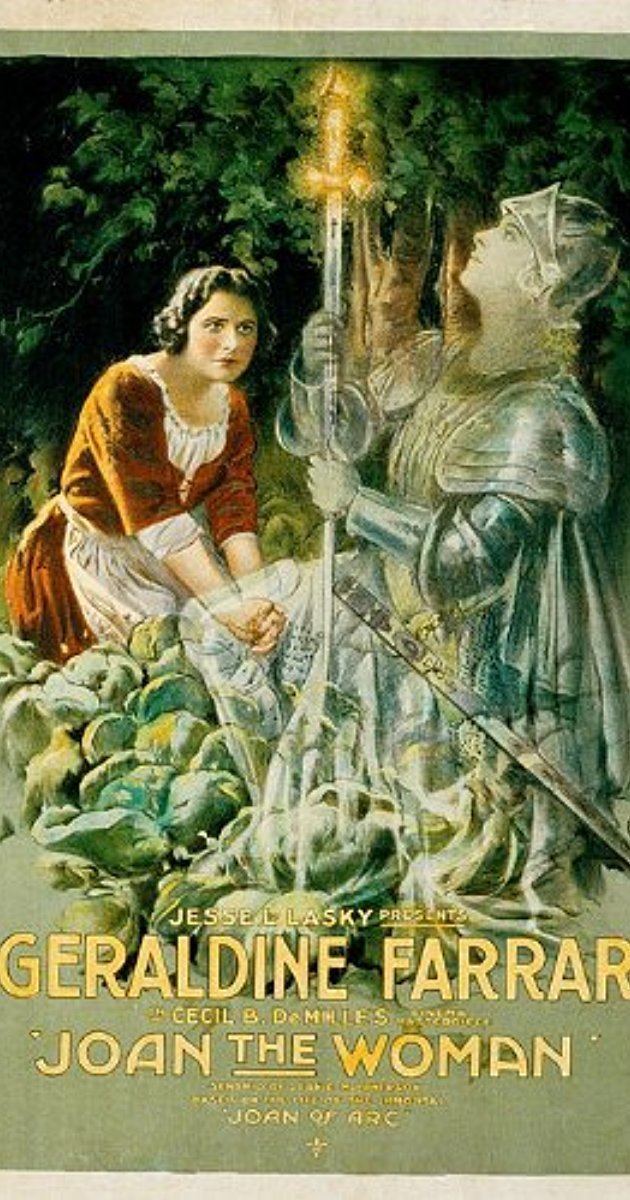
Plot
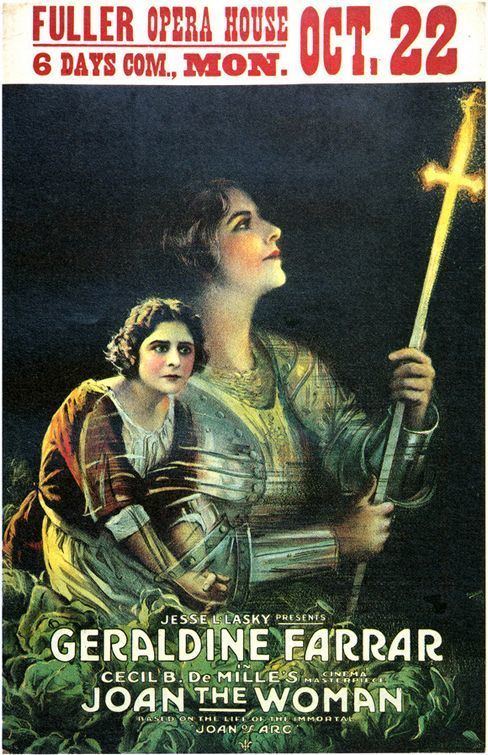
A British officer (Bosworth) in World War I has a dream of the life of Joan of Arc (Farrar). The officer pulls a sword out of the wall of the trench he is in, the sword used to belong to Joan of Arc. Removing the sword conjures up the ghost of Joan, leading to her telling her story. The setting then changes to France where the story of Joan of Arc is told, of her leading the French troops to victory and her subsequent burning at the stake. The story ends back in the trench with the officer deciding to go on a suicide mission, using Joan's story and sword as inspiration
Cast
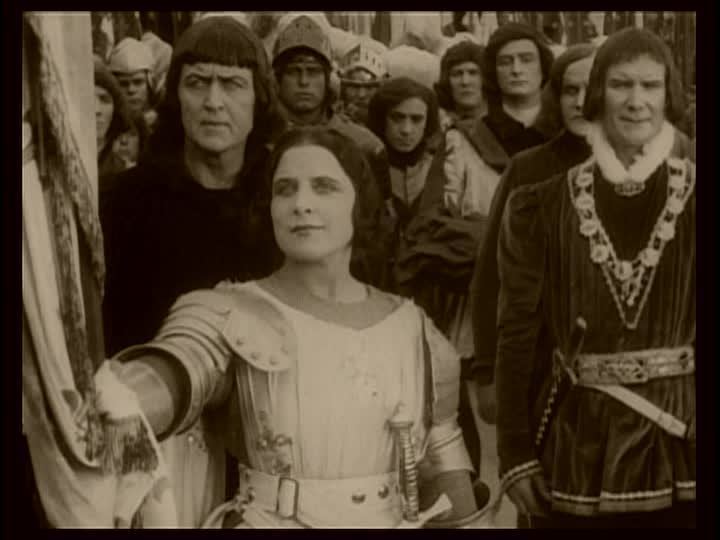
Release and reception
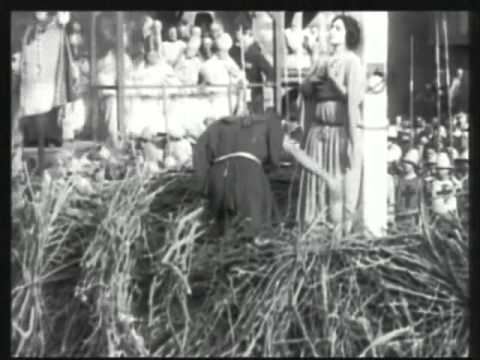
The film was released on December 25, 1916 and grossed $605,731 at the box office.
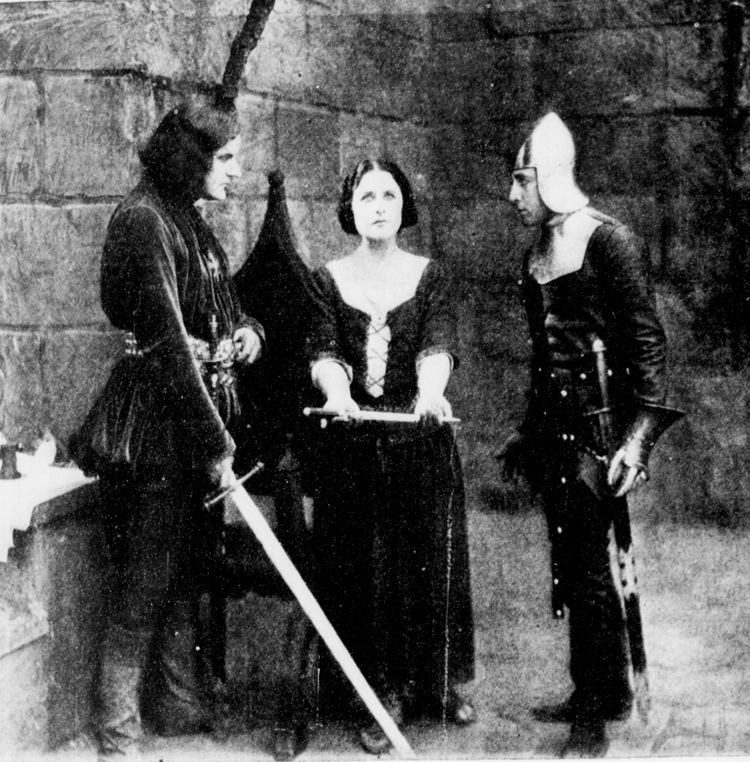
The film has been criticized by some as propaganda for World War I. The film begins and ends with the story of a British officer in the trenches fighting in World War I. He is prompted with the decision to participate in a suicide mission. He discovers a sword that belonged to Joan, and after hearing her story, decides to go on the mission. Robin Blaetz in his book Studies in Medievalism points out the sexism that exists in the film. While Joan was the inspiration for the British soldier's heroic acts, it is ultimately him who is the hero in the end of the film. Blaetz points out that this sends the message that "women and war do not mix", alluding to the idea that in World War I women should stay behind the front lines, but still be supportive of those at war.

In his review of the film, Leonard Maltin said this was "DeMille's first historical epic is nicely mounted, spotlighting the heroism and sacrifice of Joan of Arc (a miscast Farrar) as she evolves from peasant girl to saintlike figure and becomes involved with Englishman Reid. Fashioned as an accolade to France, with the story bookended by sequences set during WW1 involving a soldier who is inspired by Joan's bravery. Some of the effects are in color."
Attempted film piracy
In 1917 three men were arrested for the theft of a print of the film from a New York film exchange, which they took to New Jersey for the making of a new master negative. Both the missing print and the master were recovered. At that time there was an active criminal practice in making master negatives of American films for shipment to other countries for the production of new prints, an early example of motion picture piracy.
References
Joan the Woman WikipediaJoan the Woman IMDb Joan the Woman themoviedb.org
